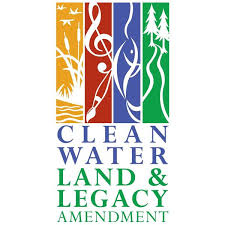After spring concerns, budget officials say Legacy balances are healthy
When Minnesota Management and Budget projected last May that state sales tax revenues would likely plummet, there was a big ripple effect for Minnesota’s artists, museums, libraries, zoos, parks, trails, wetlands, forests, prairies, and efforts to keep the state's waters clean.
That’s because 0.375% of the state’s sales taxes is earmarked for Legacy funds. Minnesota voters approved the Clean Water, Land and Legacy Amendment in 2008, raising their taxes to create a dedicated funding source for those areas. But an economy thrown into disarray in the early months of the COVID-19 pandemic led to predictions that there would be considerably less revenue coming in.
But it’s turned out to be not as severe as expected. That’s what Sean Fahnhorst, a Minnesota Management and Budget executive budget officer, told the House Legacy Finance Committee at its first meeting of the session Wednesday.

“Between May and November, the forecast got quite a bit rosier, especially in sales tax projections,” he said. “The net effect was that the balances for the Legacy funds are expected to be a lot better. We are no longer projecting deficits.”
Working off of the May 2020 forecast, the decision was made in July that some of the Legacy funds appropriated for the current fiscal year would be held back until fiscal 2022, which begins July 1.
“This was a cautionary move to make sure that we didn’t fall into deficits,” Fahnhorst said.
The result is that $16.5 million originally appropriated to the Clean Water Fund for this fiscal year will be added to the fiscal 2022 total. Similarly, available 2022 monies for the Arts and Cultural Heritage Fund will grow by $9.9 million, and the Parks and Trails Fund by $4.5 million.
The revenue from the 0.375% in sales taxes for Legacy funds is divided up thus:
- 33% to the Clean Water Fund;
- 33% to the Outdoor Heritage Fund;
- 19.75% to the Arts and Cultural Heritage Fund; and
- 14.25% to the Parks and Trails Fund.
For each fund, 5% of its balance is kept in reserve. Based upon the November 2020 forecast, Minnesota Management and Budget projects that the following will be available to be appropriated to each fund in fiscal year 2022:
- $133.2 million to the Outdoor Heritage Fund;
- $122.6 million to the Clean Water Fund;
- $70.6 million to the Arts and Cultural Heritage Fund; and
- $53 million to the Parks and Trails Fund.
Now the committee begins its work of deciding what projects will receive that money.
Related Articles
Search Session Daily
Advanced Search OptionsPriority Dailies
Speaker Emerita Melissa Hortman, husband killed in attack
By HPIS Staff House Speaker Emerita Melissa Hortman (DFL-Brooklyn Park) and her husband, Mark, were fatally shot in their home early Saturday morning.
Gov. Tim Walz announced the news dur...
House Speaker Emerita Melissa Hortman (DFL-Brooklyn Park) and her husband, Mark, were fatally shot in their home early Saturday morning.
Gov. Tim Walz announced the news dur...
Lawmakers deliver budget bills to governor's desk in one-day special session
By Mike Cook About that talk of needing all 21 hours left in a legislative day to complete a special session?
House members were more than up to the challenge Monday. Beginning at 10 a.m...
About that talk of needing all 21 hours left in a legislative day to complete a special session?
House members were more than up to the challenge Monday. Beginning at 10 a.m...